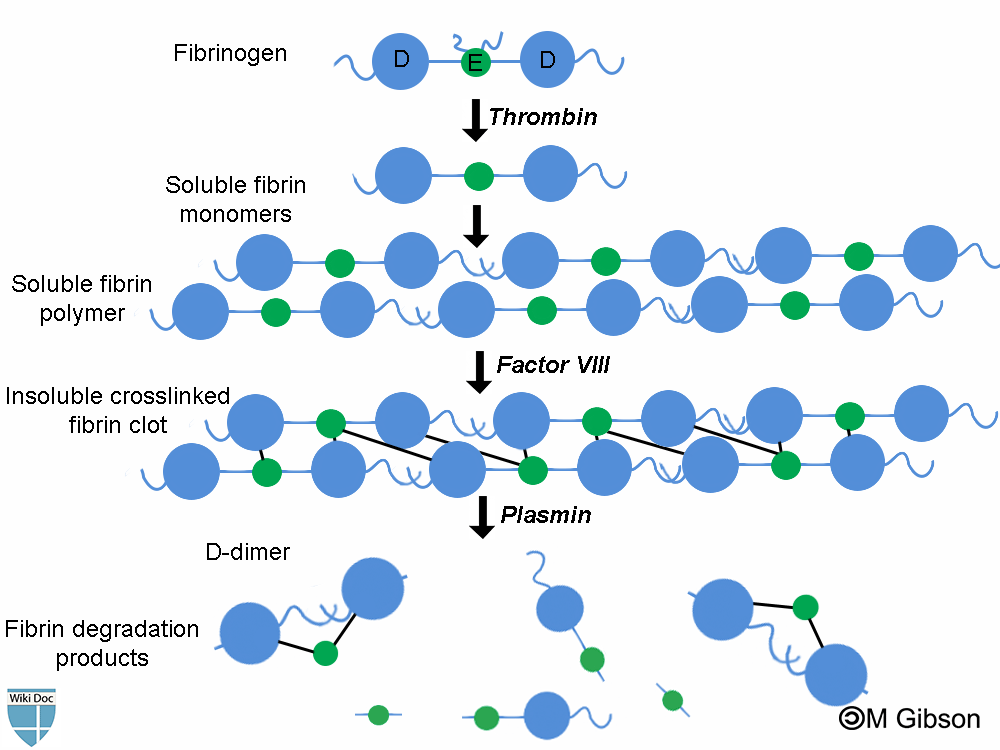D-dimer physiology
|
D-Dimer Microchapters |
|
Clinical Correlation |
|---|
|
Clinical Trials |
|
D-dimer physiology On the Web |
|
American Roentgen Ray Society Images of D-dimer physiology |
Editor-In-Chief: C. Michael Gibson, M.S., M.D. [1]
Overview
Physiology
Fibrin degradation products (FDPs) are formed whenever fibrin is broken down by enzymes. In fact, FDP are formed as a result of the sequential actions of the following three different enzymes: thrombin, factor VIII and plasmin. Determining FDPs is not considered useful, as this does not indicate whether the fibrin is part of a blood clot (or being generated as part of inflammation).
D-dimers are unique in that they are the breakdown products of a fibrin mesh that has been stabilized by Factor XIII. This factor crosslinks the E-element to two D-elements. This is the final step in the generation of a thrombus.
Plasmin is a fibrinolytic enzyme that organizes clots and breaks down the fibrin mesh. It cannot, however, break down the bonds between one E and two D units. The protein fragment thus left over is a D-dimer.[1]
Shown below is an image summarizing the formation of D-dimers and other fibrin degradation products as a result of the sequential action of the three enzymes: thrombin, factor VIII and plasmin.

References
- ↑ Adam SS, Key NS, Greenberg CS (2009). "D-dimer antigen: current concepts and future prospects". Blood. 113 (13): 2878–87. doi:10.1182/blood-2008-06-165845. PMID 19008457 Check
|pmid=value (help).